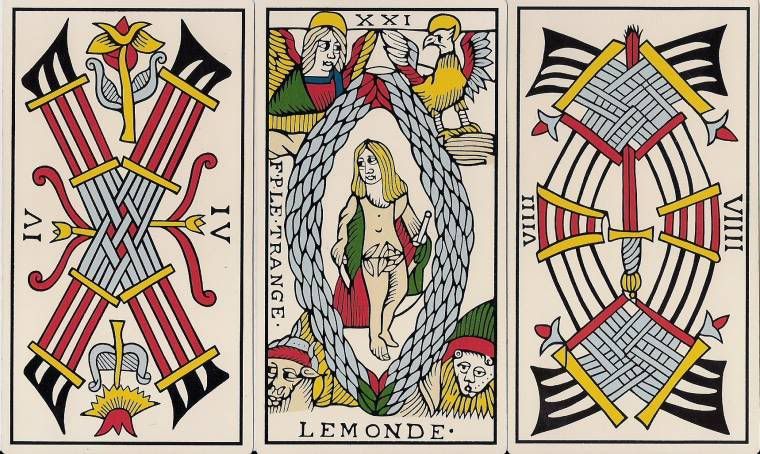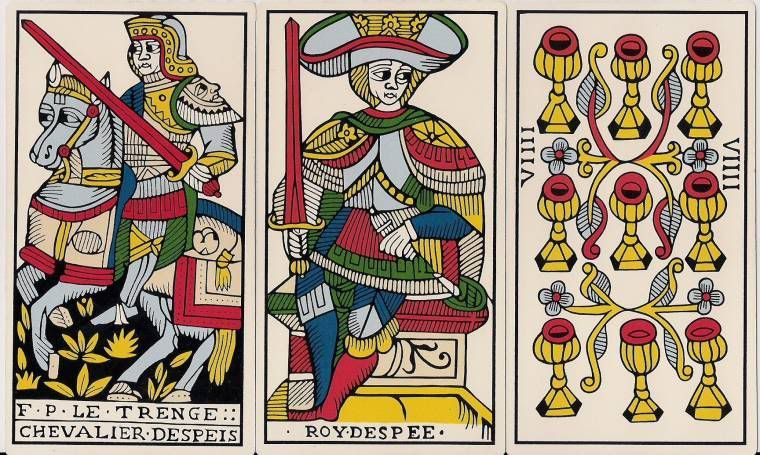Another spread...
Swords dominate, especially the juxtaposition of the erect sword and the inclined sword. I think the movement of the spread, the movement of a potential reading would be centered on this juxtaposition. Sword upright and motionless, sword leaning and in movement, away from the Cups. Thought inclining away from feeling? The Cups are neat and tidy and very well organised, very well divided up into their respective spaces, like animals in a pen, so no cup interferes with another cup.
One pair of eyes is fixed on the organisation, the order, while the Knight turns his back and moves away. I cannot pinpoint it exactly but the yellow of the central King's tunic, the bending patterns on his shoulder, upper arms, lower chest, seem to echo the controlling vines of the 9 of Cups (and a little flower on his right shoulder confirms this, and he has his own little vine at the base of his throne. Perhaps we see the controlling element of the King of Swords bleeding into the suit of Cups here?)
There is bending and floridness - floridity? - which contrasts with the straightness of Swords. The Knight of Sword's shoulder pad has that intriguing face which has its eyes fixed on point of the King's sword. Much going on here. A lot of interaction.
The overall feel of the spread is one of rejecting order, rejecting control, inclining away from these things and heading off into the unknown.




